Top 4 Boreal Wetland FAQs
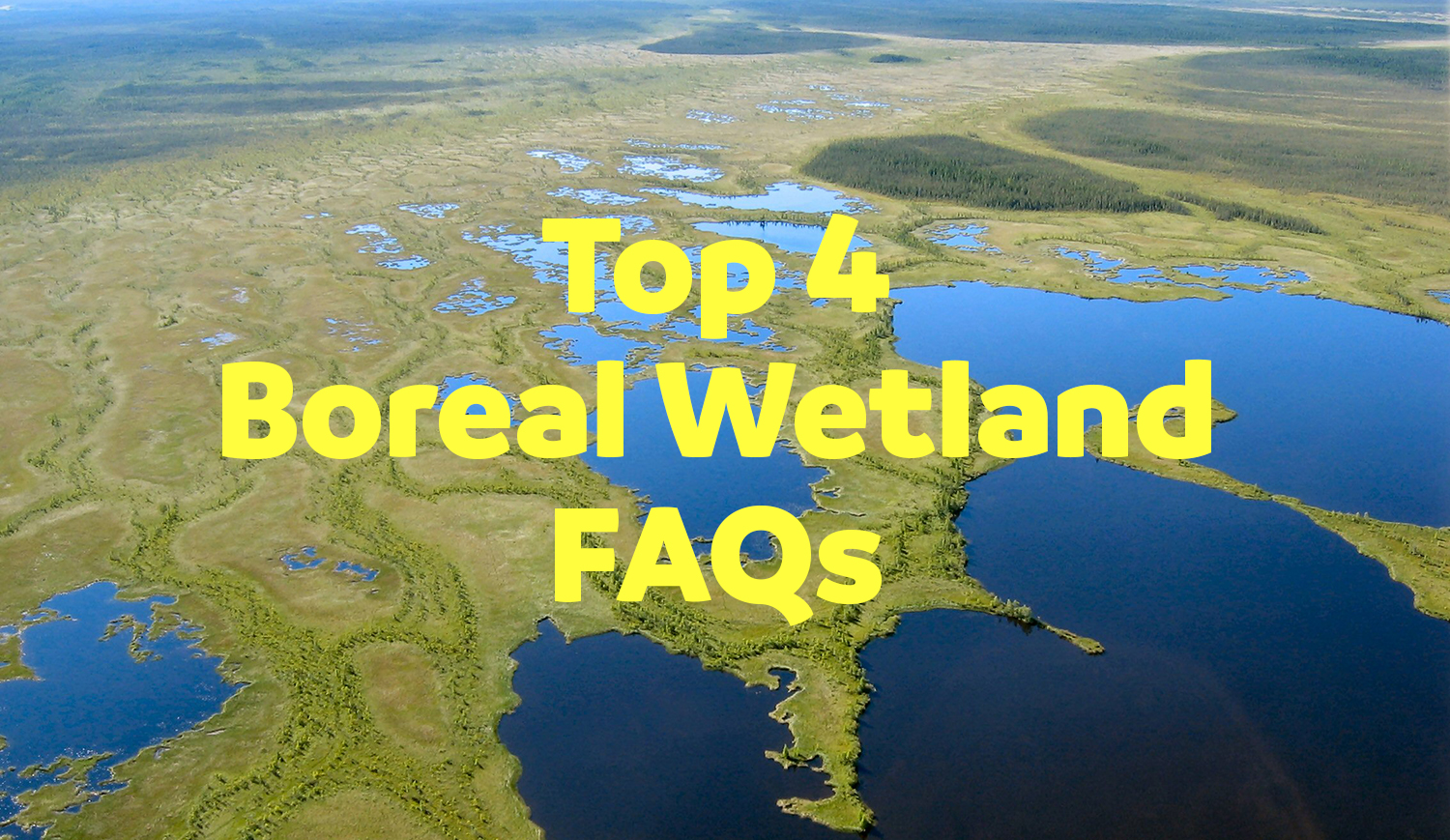
October 2020
In autumn, we are usually wrapping up our remaining in-classroom and in-the-field wetland training sessions. But as we all know; this year is very different. In this world of digital learning, our aim is to continue providing you with science-based, relevant information about boreal wetlands and conservation.
In this article, we answer the top four frequently asked questions we received from folks who have taken Wetlands 101: An Introduction to Boreal Wetlands online course:
- What types of animals (fauna) utilize boreal wetlands?
- How do wetlands to filter water?
- How do wildfires impact peatlands?
- Rich vs. poor fens: what are the differences and how can I tell them apart?
Leanne Mingo, conservation programs specialist of the DUC National Boreal Program, tackles the answers.
Q: What types of animals (fauna) utilize boreal wetlands?
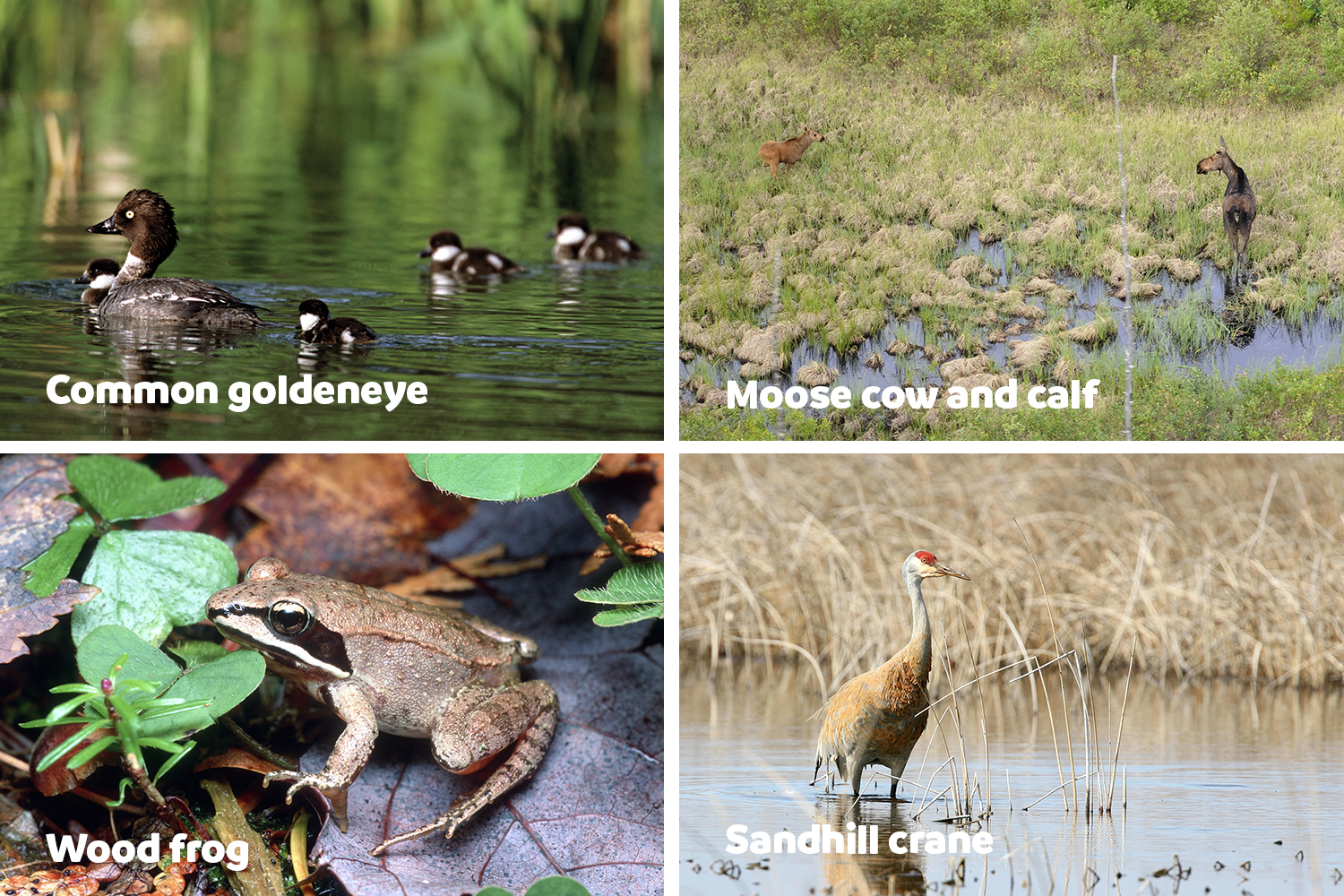
A: Wetlands are biodiversity hotspots and not just for the plant species they support. A diverse array of fauna (animals) utilizes wetlands for part or all of their life cycles, including a variety of large and small mammals, birds and amphibians.
Mammals
In the boreal, several large mammals utilize wetlands.
Moose use wetlands extensively in the summer months and feed on vegetation around marshes, shallow lakes and swamps. Meanwhile, woodland caribou, a threatened species under Canada’s federal Species at Risk Act (2002), use peatlands, typically forested peatlands, as refugia from predators such as wolves and bears. In addition to ungulates, other large mammals such as bears utilize wetlands. In the springtime, both black bears and grizzly bears feed in swamps and marshes and by late summer, they typically move to bogs for their abundant berries. Many small mammals also utilize wetlands such as shrews, lemmings, voles, muskrats and beavers.
Birds
Canada’s boreal forest supports nearly half of all bird species commonly found in Canada, with approximately 325 known species utilizing the boreal. In fact, the boreal forest supports 80 per cent of North America’s waterfowl species, 63 per cent of the finch species and more than 50 per cent of the warbler species (BSI 2015). Kingfishers, owls, ospreys and other predators use wetlands to feed, whereas many waterfowl use wetlands as habitat as well as refugia from predators while molting. Many water birds, such as the sandhill crane, use wetlands during migration, as stopover areas to rest and feed, and for nesting habitat.
Amphibians
An often-overlooked group of fauna found in wetlands are amphibians. Boreal wetlands provide critical amphibian habitat for several frog species, including boreal chorus frogs, wood frogs and occasionally, leopard frogs. While many amphibians rely on open water and marsh ecosystems, few amphibians would be considered obligate peatland species. The low pH and temperature of boreal peatlands mean there is generally a low diversity of amphibians in these ecosystems.
Q: How do wetlands filter water?
A: Wetlands have been described as “nature’s kidneys” based on their remarkable ability to filter sediment and contaminants out of water. It’s mostly thanks to the rich vegetation found in wetlands.
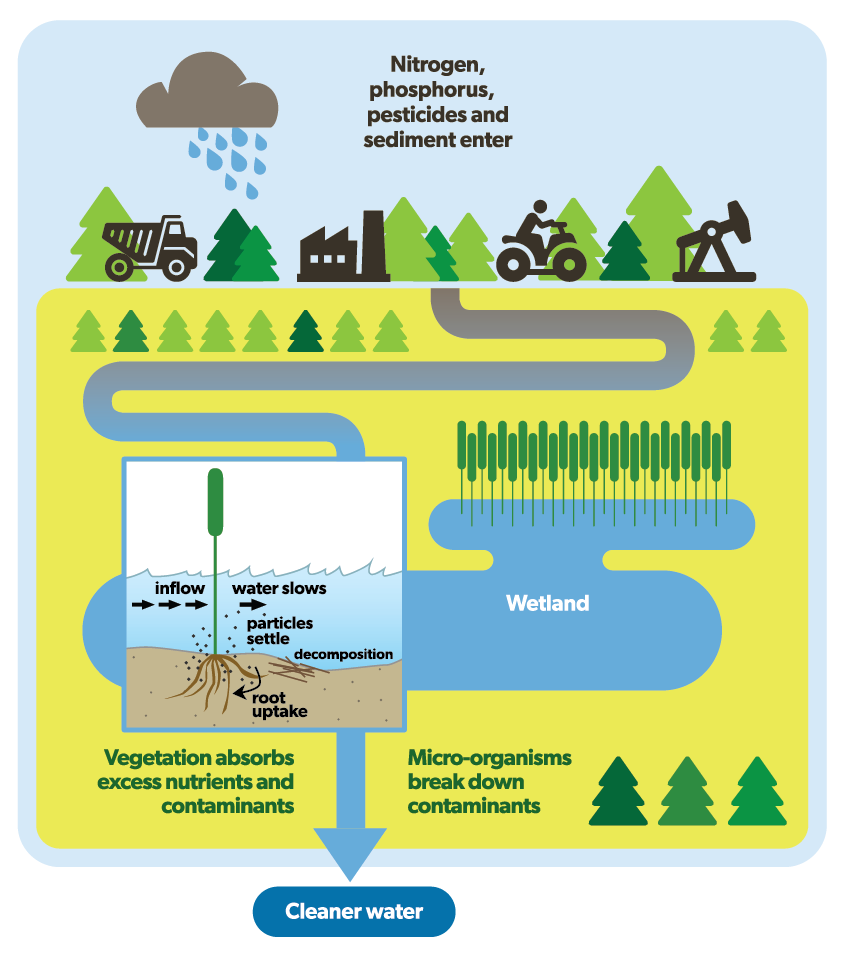
Wetlands filter sediment out of the water by slowing the speed at which water passes through the wetland. As water hits the vegetation, the flow rate slows; this allows sediment to settle out of the water and become part of the ground layer, leaving the water with less sediment.
Wetlands filter excess nutrients in water through plant uptake. Vegetation such as cattails and rushes absorb excess nutrients for leaf and stem growth. Excess nutrients can also bind to particles in the water and become trapped in the soil where microorganisms will use them. Furthermore, wetland vegetation can also take up more harmful contaminants, such as heavy metals. While wetlands do this naturally, wetlands are also being engineered and developed to filter contaminants and improve water quality in industrial areas, in wastewater treatment systems, and in urban settings.
Q: How do wildfires impact peatlands?
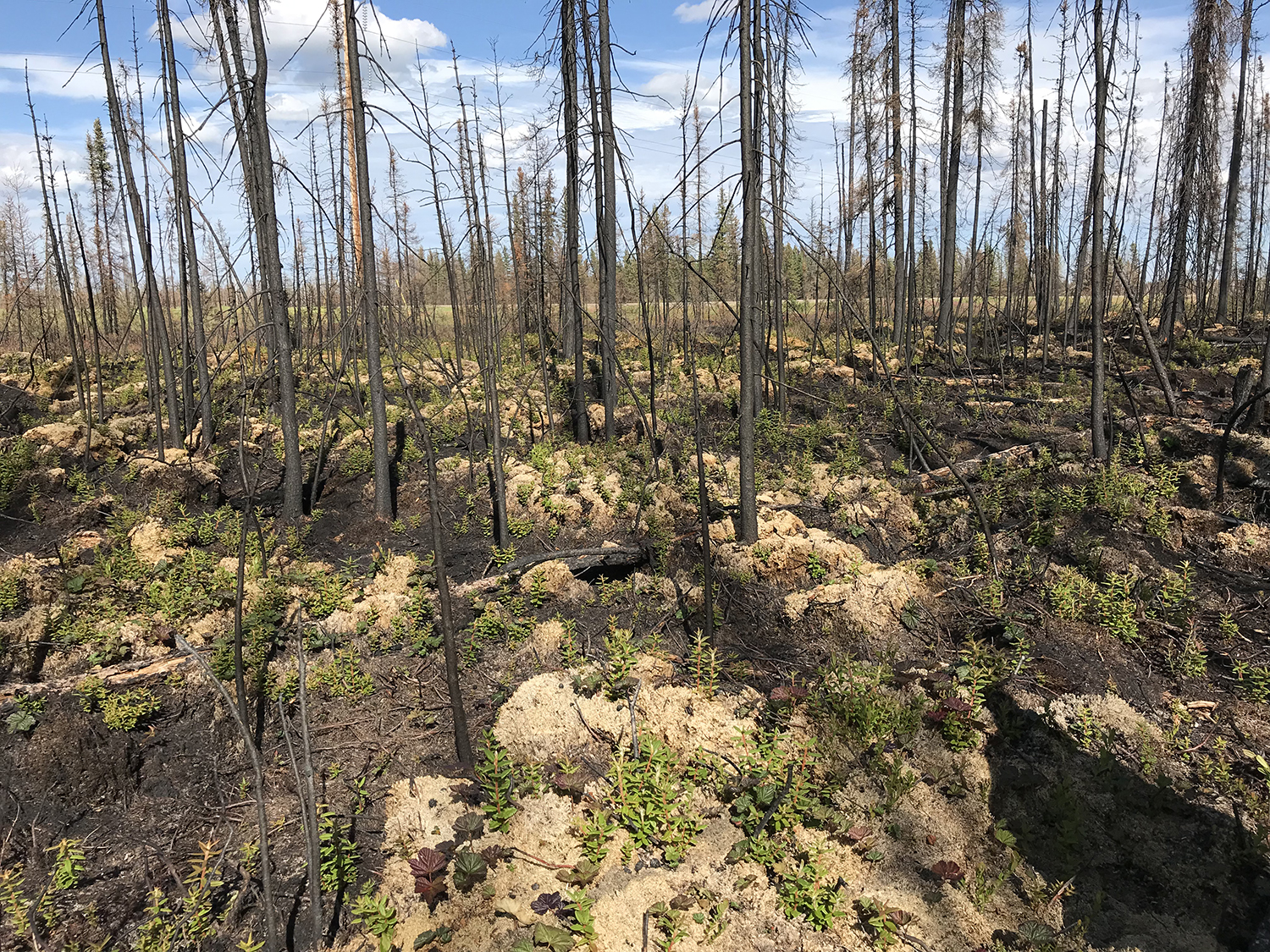
Peatland post forest fire.
A: Wildfire is an integral part of the boreal ecosystem and, in part, drives vegetation and soil dynamics. Historically, peatlands have been considered a fire refugia due to their saturated soils. Species such as Sphagnum mosses are typically regarded as fire-resistant due to their high moisture content. However, over the past few decades, research has shown that this may not always be the case.
In some boreal areas, peatlands are drying out due to anthropogenic disturbances (e.g., drainage), climate change, or aging due to changes in natural disturbance regimes (e.g., fire suppression). When peatlands become drier, their vegetation community can shift to support increased tree growth and decrease Sphagnum cover. Increased tree growth, in turn, increases the fuel for wildfires and reduces soil moisture due to the interception of rainfall by the trees and increased evapotranspiration (water loss through evaporation from the soil and the plant surface). These changes can result in peatlands propagating wildfires rather than acting as barriers to fire.
While there are numerous knowledge gaps around boreal megafires, researchers are looking for solutions. Models have shown that restoring peatlands, including thinning trees, re-wetting the ecosystem, and creating conditions to support Sphagnum moss, will mitigate and decrease the boreal fire risk. However, there are numerous challenges to implementing this type of restoration at a large scale such as access and cost.
Q: Rich vs. poor Fens: what are the differences, and how can I tell them apart?
A: Fens are the most abundant wetland type in Canada’s boreal forest. They can be treed, shrubby or open and range in nutrient types from rich to poor. Our EWC Field Guide is a tool you can download to help you identify wetlands in the field. We also offer GIS & remote sensing services to map and classify wetlands, and we have developed several inferred products that focus on the underlying factors forming those wetlands, such as water flow characteristics, soil moisture content and relative nutrient status.
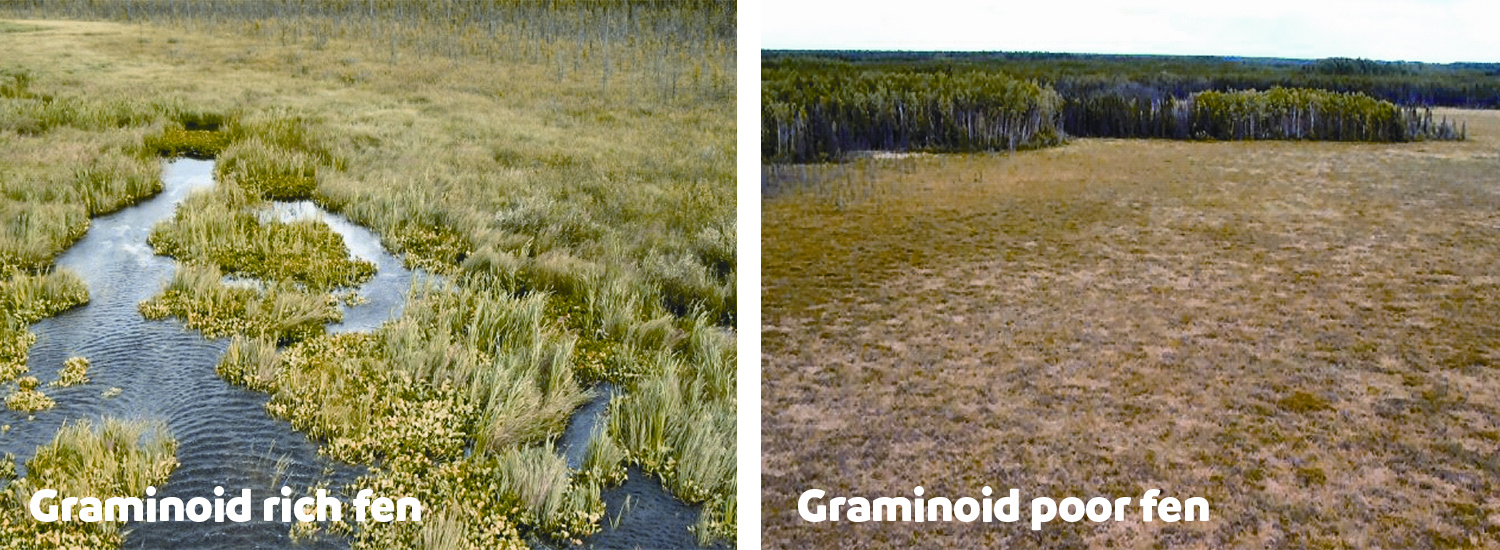
Poor vs. rich fen comparison.
DUC’s Enhanced Wetland Classification System classifies fens beyond their vegetation forms (treed, shrubby or open) based on richness. Other classification systems in Canada use a similar approach, such as the Alberta Wetland Classification System (2015) and the Canadian Wetland Classification System (1997).
Richness is a measure of a fen‘s nutrient regime. Rich fens form when the area has high groundwater inputs as groundwater brings in more mineral ions and nutrients than rain or surface water inputs. Thus, poor fens tend to receive fewer groundwater inputs and have lower nutrients regimes.
In the field, a fen’s richness is assessed based on its electric conductivity (EC) and pH. With increasing richness, you’ll see an increase in the EC and pH as more mineral ions are present and available to the vegetation. Extremely rich fens tend to have a pH above 6.9 whereas poor fens tend to have a pH between 4.5 and 5.5. When you don’t have a pH meter handy, the ground vegetation present in a wetland can help determine the site’s richness. Look for the following species to determine if the fen is a rich or poor system:
|
Rich Fen |
Poor Fen |
|
|
Read More
Explore our interactive map to learn more about Canada’s boreal plains wetlands
Why DUC and the ABMI are collaborating to produce the next generation of wetland maps for Alberta
Got more questions? Reach out to us
Ducks Unlimited Canada is a registered charity committed to wetland conservation. Your support is appreciated, please donate today.
Citations:
Alberta Environment and Sustainable Resource Development (ESRD). 2015. Alberta Wetland Classification System. Water Policy Branch, Policy and Planning Division, Edmonton, AB
Boreal Songbird Initiative. 2015. North America’s Bird Nursery webpage. Accessed on September 10th, 2020 <https://www.borealbirds.org/boreal-birds>
The Canadian Wetland Classification System, 2nd Edition. Warner, B.G. and C.D.A. Rubec (eds.), Wetlands Research Centre, University of Waterloo, Waterloo, ON, Canada.


